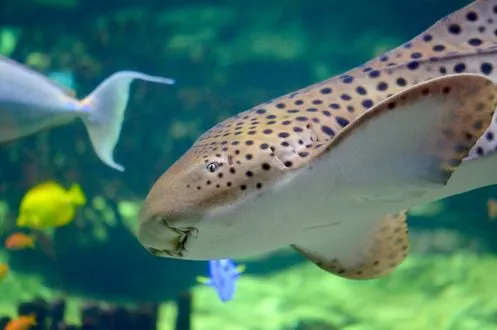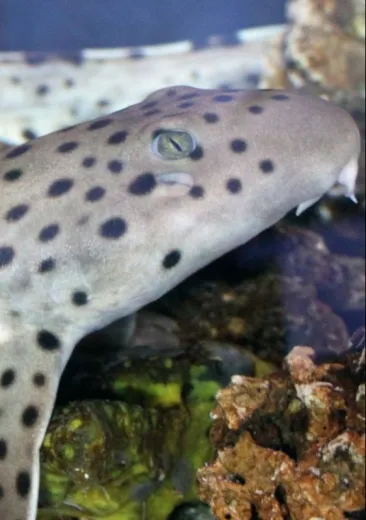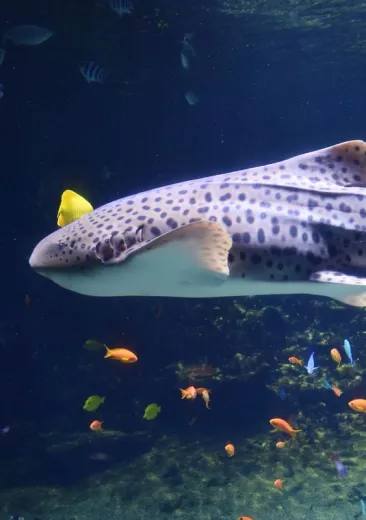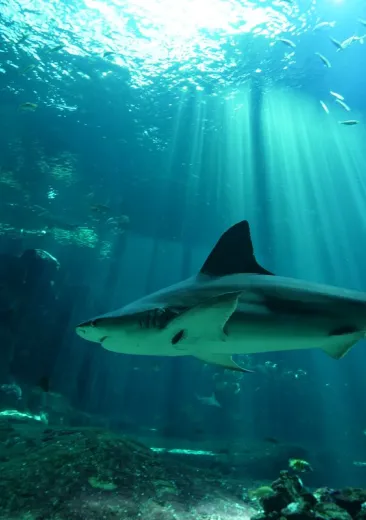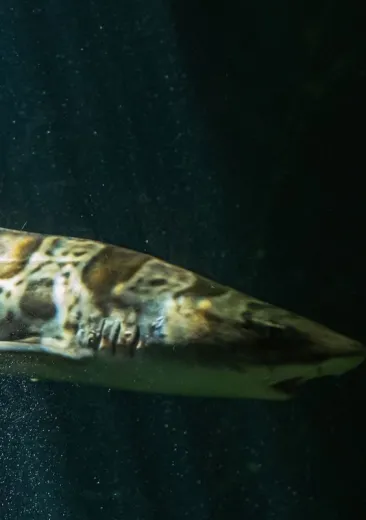Biodiversity 4mn
What do sharks eat?
The image of a voracious shark constantly on the lookout for food persists in the collective imagination. But what do sharks really eat?
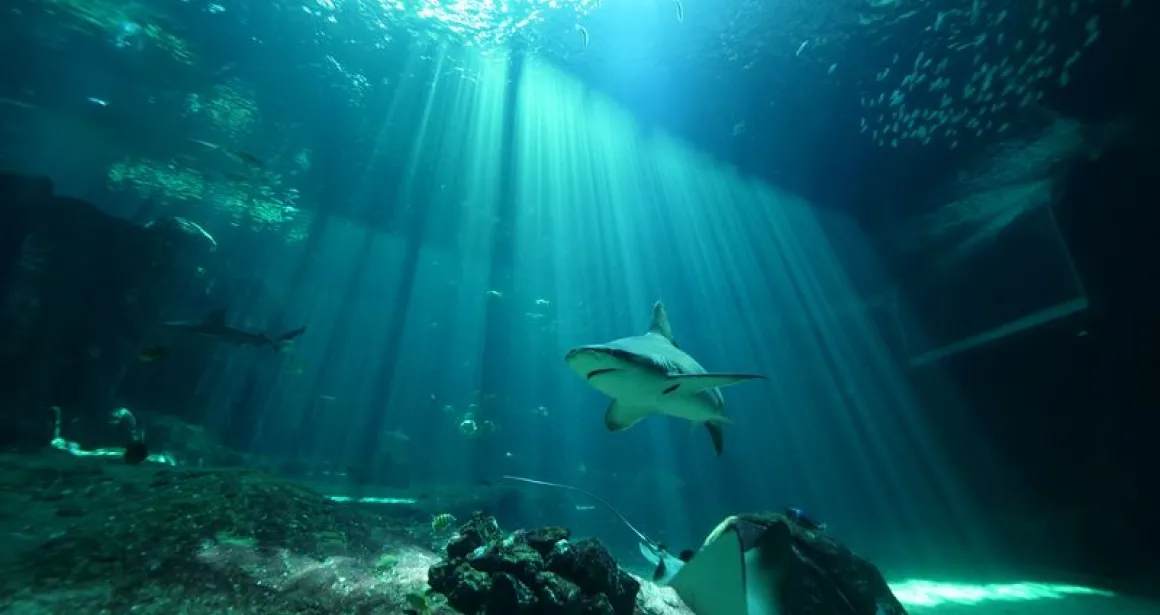
What sharks eat in the wild
Sharks are selective predators and their dentition reflects their feeding habits. In the wild, the shark is an opportunistic predator: among the pelagic sharks, the tiger shark and the bull shark feed on both dead and live prey, as well as carrion and detritus, such as the carcasses of cetaceans.
Their teeth are different: the tiger shark uses its teeth to attack sea lions and turtles, whereas the bull shark uses its teeth to feed on fish and squid like the blue shark.
Among benthic sharks, nurse sharks or Western wobbegongs hunt by lying in wait and feed on bony fish and crustaceans. The Western wobbegong, for example, has enormous suction power that is uses to suck up the animals that take refuge in the crevices of the reef.
Sharks have a highly developed sense of smell, which means they can spot their prey from several kilometres away.
By feeding on weak or sick animals, sharks act as a regulator of lower predator species, thereby contributing to the balance of the ecosystem in which they live. Therefore, the shark’s place at the top of the food chain is essential to the balance of the oceans.
A small appetite
Contrary to what you might think, sharks do not eat that much.
They swallow an amount equivalent to 0.5 to 1% of their body weight per day. They digest slowly and their meal can be assimilated over a period of 24 hours to 4 days depending on the species, diet and water temperature.
In the natural environment, food intake follows a seasonal cycle that varies according to water temperature and the animal’s reproductive cycle. In aquariums, this cycle is still present, although it is less pronounced.
The feed rate also varies with the age of the animal. It increases from 10% of the body weight in a young animal to 3 to 5% in a sub-adult and 1% in a sexually mature adult.
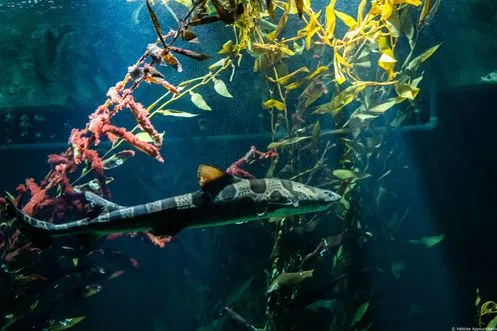
Are there any “vegetarians” among sharks?
Let’s say that they’re pretty much omnivorous!
For the whale shark and the basking shark, plankton is on the menu. These two species of shark, which are the largest in the world, are peaceful seawater filter feeders and eat plant and animal plankton.
Although the whale shark sometimes eats small fish as well.
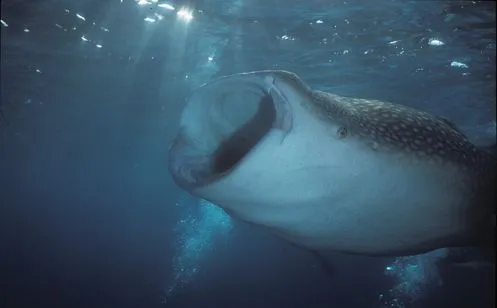
What do the sharks at Nausicaá eat?
Here at Nausicaá, the sharks eat mainly fish and squid and the amount of food is calculated in relation to the size of the animal.
- The sandbar sharks in the high seas tank are fed twice a week.
- In the Californian tank in the Mankind and Shores exhibition, the leopard sharks are also fed twice a week. Their diet consists of fish, squid and crustaceans with the size of their prey adapted to their mouth.
- Zebra sharks also eat crustaceans and molluscs. Each shark obtains its food by swimming towards a target.
- The epaulette shark in the Island Stories exhibition feeds on fish, prawns and squid that it collects from the bottom of the tank.
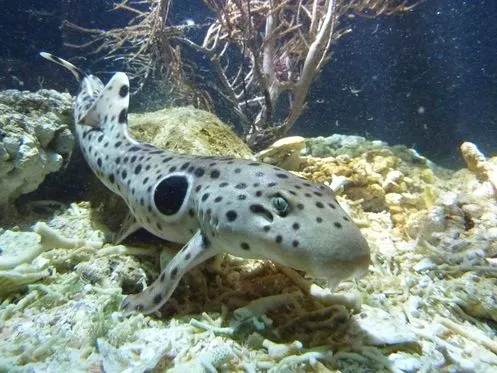
How do the sharks eat at Nausicaá?
As sharks are actually not particularly voracious, they can be kept in the aquarium with other fish.
All the sharks at Nausicaá are closely monitored and fed individually by the aquarists two or three times a week.
The sharks are trained to search for food at the end of a pole or a pair of tongs, so that their food intake can be monitored on an individual basis. The handlers can also observe their feeding behaviour.
